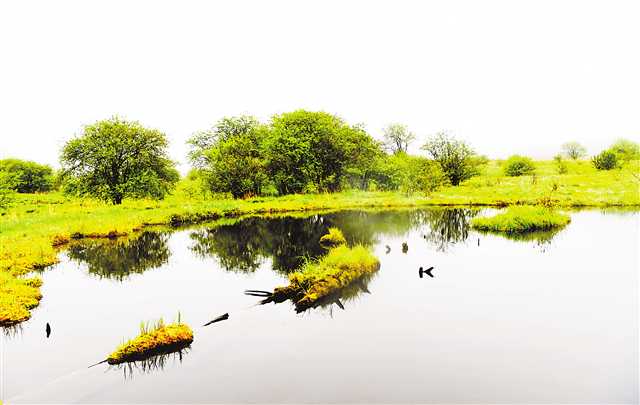By WANG KAIHAO in Beijing and DENG RUI in Chongqing | China Daily | 2021-07-30
A nature reserve in Chongqing was included as part of a UNESCO World Heritage Site on Wednesday during the ongoing 44th session of the World Heritage Committee in Fuzhou, Fujian province.
The Wulipo National Nature Reserve in Wushan county was included as part of Shennongjia in neighboring Hubei province, a key center of biodiversity that was added to the list in 2016.

The expansion followed a Chinese proposal to modify the original boundary of the Shennongjia site to further reflect the ecological value of the area. The boundary modification was approved by the committee on Wednesday.
According to a report drafted by the National Forestry and Grassland Administration, Hubei Shennongjia has expanded by 63 square kilometers, or 8.6 percent of its original area, including about 58 sq km within the Wulipo reserve.
The International Union for Conservation of Nature, an advisory body to the World Heritage Center, backed the proposal, saying the boundary modification would help protect an area with outstanding universal value, and enhance the site’s integrity.
Wulipo ranges in altitude from 175 to 2,680 meters above sea level, and its varied topography shelters a high level of biodiversity, complementing Shennongjia.
It is estimated that about one-third of the species in the newly added area are not found in the original one.
Wulipo is home to at least 447 wild terrestrial vertebrate species, 34 endangered animal species, and 2,790 species of seed plants.

“The successful inclusion of Wulipo as part of the World Heritage Site will enable us to take more measures to protect endangered species and maintain the integrity of the ecosystem in the northeast of Chongqing,” Wang Shengbin, deputy director of the Chongqing Municipal Forestry Administration, said.
Cooperation on ecological protection between Hubei and Chongqing will be one result of the milestone development, he said.
Wulipo is now the third World Heritage Site in Chongqing, after the Dazu Rock Carvings and two sections of the South China Karst, which spans Chongqing, the Guangxi Zhuang autonomous region, and the provinces of Guizhou and Yunnan.
Source: China Daily, 2021-07-30
http://www.chinadaily.com.cn/a/202107/30/WS61035326a310efa1bd6656fd.html
************
Shennongjia Biosphere Reserve, China

The Shennongjia Biosphere Reserve belongs to the east branch of the Dabashan Mountains which connect the Tibetan Plateau in West China with the Yangze plain in East China. The area covers high elevation differences from the lowest valley (420 meters) to the highest peak (3,106 meters above sea level) and therefore offers a wide spectrum of vegetation zones. Forests are protected and, with various species of vascular plants and the occurrence of a golden monkey (Rhinopithecus roxellana) population, the biosphere reserve is considered to be a ‘Green Gene Pool’ of China. Ecological tourism is the main economic industry in the reserve, in which women are mostly engaged.
Ecological Characteristics

Shennongjia Biosphere Reserve is located in the transition area from the northern subtropical zone to the warm temperate zone and it is also the transition from the Central China hills to the West China mountains. It is therefore the crossing point where a wide variety of species gather. In the reserve the forest is vast and dense, river valleys are deep, and there are a lot of gullies and ravines. The terrain is complex and the climate changes significantly with the altitude. The unique geographical and climate conditions make Shennongjia home to a rich variety of species.
According to available data, there are 3,239 species (including 275 variations) of vascular plants in 1,027 genuses of 236 families. Among them, 25 species are national key species for protection. There are also 493 species of vertebrates and 4,143 species of insects, 73 of which are national key species for protection. The reserve hosts a wide variety of wildlife species under prioritized protection. There are 26 species of plants and 73 species of animal under national protection, as well as 42 endemic species.
Located at the eastern fringe of the evergreen and deciduous oak-type China Armand pine area, its natural flora fall into six types: Coniferous forest, broad-leaved forest, bamboo grove, bushes, grass, and marsh. The characteristics of the flora are with complicated components and multiple sources. Shennongjia is also the eastern most habitat of Sichuan golden monkey.
Source: UNESCO https://en.unesco.org/biosphere/aspac/shennongjia
See more photos: https://www.hicn.cn/system/2021/07/28/032589493.shtml